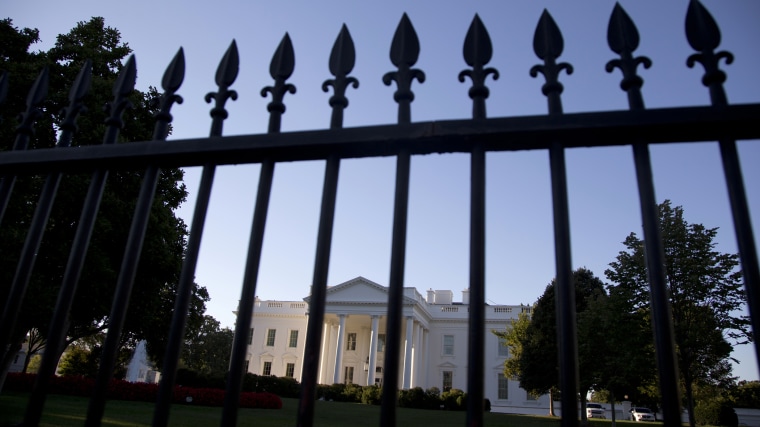The Secret Service has experienced a series of unfortunate setbacks recently, including an incident this month in which a man with a knife was able to jump the White House fence and enter the building before he was apprehended.
Carol Leonnig, however,
reported over the weekend on an even more serious incident that the public previously knew nothing about.
The gunman parked his black Honda directly south of the White House, in the dark of a November night, in a closed lane of Constitution Avenue. He pointed his semiautomatic rifle out of the passenger window, aimed directly at the home of the president of the United States, and pulled the trigger. A bullet smashed a window on the second floor, just steps from the first family's formal living room. Another lodged in a window frame, and more pinged off the roof, sending bits of wood and concrete to the ground. At least seven bullets struck the upstairs residence of the White House, flying some 700 yards across the South Lawn. President Obama and his wife were out of town on that evening of Nov. 11, 2011, but their younger daughter, Sasha, and Michelle Obama's mother, Marian Robinson, were inside, while older daughter Malia was expected back any moment from an outing with friends.
In this case, Secret Service officers, including one near the terrace where bullets hit the White House, rushed to action, but a supervisor halted the response, blaming the sound on a vehicle backfire.
Hours later, the Secret Service changed its assessment, but still got the incident wrong -- officials decided there had been shots, but the White House wasn't the intended target.
It wasn't until a housekeeper noticed "broken glass and a chunk of cement on the floor" that the Secret Service realized that a shooter had hit the White House residence. It was four days after the incident.
The gunman, Oscar R. Ortega-Hernandez, was eventually caught and arrested, but even this was largely the result of luck.
[T]he suspect was able to park his car on a public street, take several shots and then speed off without being detected. It was sheer luck that the shooter was identified, the result of Ortega, a troubled and jobless 21-year-old, wrecking his car seven blocks away and leaving his gun inside.
Leonnig's report is absolutely worth reading in its entirety, and it raises questions anew about the Secret Service's handling of recent incidents. Congressional hearings are on the way, and under the circumstances, they seem entirely warranted.
But there was one other tidbit I wanted to flag: "President Obama has faced three times as many threats as his predecessors, according to people briefed on the Secret Service's threat assessment."
This has been an ongoing area of concern since the beginning of the Obama presidency. Ronald Kessler published a book back in 2009 that cited Secret Service sources who claimed threats against the president had risen 400% as compared to his immediate predecessor. By October 2009, a Congressional Research Service report concluded that threats against the president in his first year reached "
unprecedented" levels.
By late 2009, however, the
New York Times reported some good news and some bad news: the number of threats, it said, had "leveled off" nearly a year after Obama's inauguration, and the president was receiving "about the same" number of threats as his recent predecessors. At the same time, however, the severity of the threats were far worse.
That report was published in December 2009. Leonnig's Washington Post piece suggests the threats didn't "level off" for very long.
*
Update: As of late this afternoon, the Secret Service has
even more explaining to do: "The man who jumped the White House fence this month and sprinted through the front door made it much farther into the building than previously known, overpowering one Secret Service officer and running through much of the main floor, according to three people familiar with the incident."
